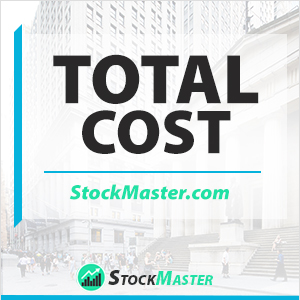 What is Total Cost?
What is Total Cost?
Definition: In business, total cost is described as all the costs that a business or company encounters when it decides to produce goods or services at a particular output level.
To most people, the term total cost is probably the final tally of the cost of their shopping when they visit the grocery store. However, in the business and corporate world, the term finance means something more complex although the concept is quite similar.
The total cost takes into account the fixed costs involved in the business operations such as equipment, buildings, and others. It also accounts for the variable costs that a business incurs such as raw materials and labor costs.
Fixed costs remain the same regardless of the output level while variable costs change depending on the output levels. For example, a business will have to purchase more raw materials and likely incur a higher electricity bill if its goal is to increase its production capacity and output. Meanwhile, the production activities will still be handled in the same building as before and so the cost of the building does not change.
How do costs affect the business?
The total costs of a firm have a massive impact on how it structures its business, and more so the pricing of its products. Every business aims to achieve the maximum profits possible but profits are determined by the level of sales and also the total costs involved in the production process.
Every business has a sales ceiling in the market where it is involved and this limits the amount of revenue that it generates. If the business still wants to increase the profits despite the sales ceiling, it focuses on reducing its production costs or increasing its efficiency.
Total Cost Formula
The total costs involved in the production of goods usually helps to find the average cost. The latter is the average cost of manufacturing a single unit of the company’s product. The average cost is determined by dividing the total cost by the total produced units. There is also the marginal cost which is likely to come up when dealing with average costs and it is described as the slight increases in the total cost of producing a unit.
The marginal costs and average costs help the business owners or the company’s management to have a better view of how their production activities are faring. It also allows them to make decisions on how to improve any aspect of their production or even whether to make any adjustments. For example, a firm may seek to establish whether it is worth incurring the marginal cost will provide a favorable output or whether the output is negligible. They can use the data to decide whether or not to invest in extra inputs depending on the impact of the marginal costs on the production output.
At any given time, a business aims to make sure that the total revenues from its production activities outweigh the total costs. This is one of the basic principles on which businesses decide whether to wind up or remain operational. If the total costs of a business outweigh the total revenues, then there is no incentive to remain operational.
Total Cost Example
The focus is usually on increasing the gap between the revenues and costs so that revenues will be higher. In other words, the goal of every business is to maximize its revenues while maintaining the costs at minimum or reasonable levels. However, taking up some extra costs is not necessarily a bad thing.
For example, a business may purchase more raw materials and also spend more on machinery in the interest of expanding its production capacity. This would translate to higher costs of production due to the additional costs but then again the business stands to gain more revenue. It just has to identify the point of diminishing returns so that it will maintain production at optimal levels to facilitate the maximum revenues and optimal total costs.
